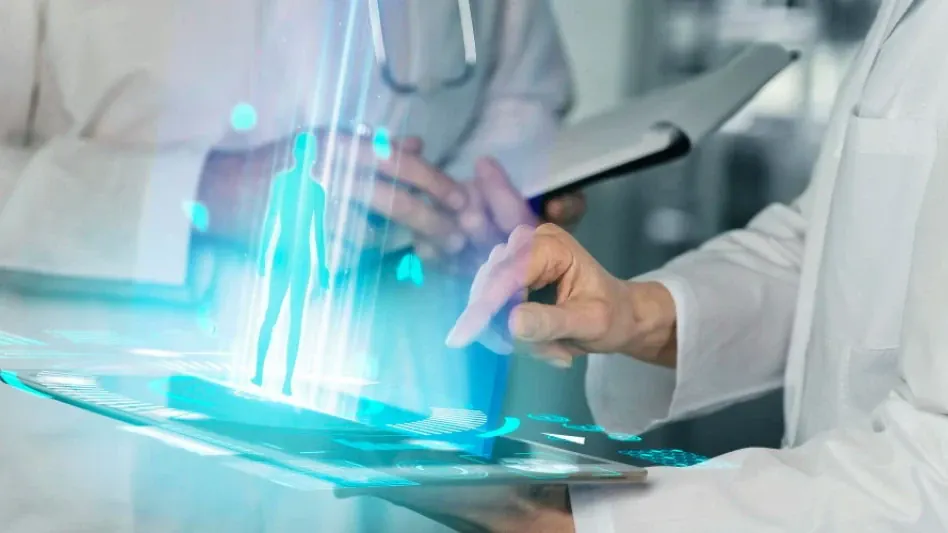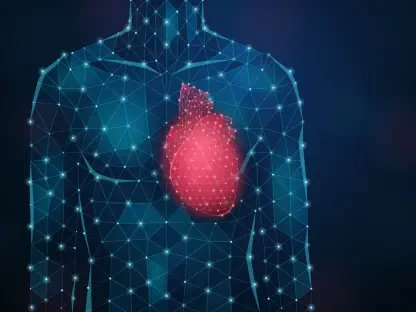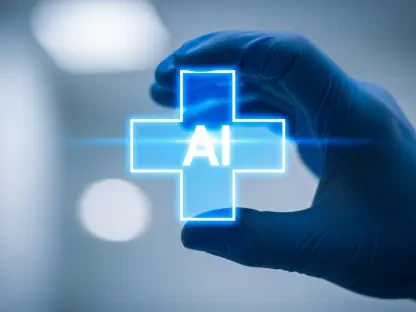The healthcare industry stands at the precipice of a significant transformation, driven by the rapid advancements in automation technologies. Faced with the growing demands for higher efficiency, accuracy, and patient-centered care, automation presents itself as a critical solution to these challenges. This article explores the future of automation in healthcare, its potential benefits, applications, and key trends shaping its evolution.
The Current Landscape of Healthcare Automation
Challenges in Healthcare
Healthcare automation involves various technologies aimed at streamlining processes, improving patient care, and reducing operational costs. Hospitals and clinics today face numerous challenges, including staff shortages, increasing expenses, and the need to enhance patient outcomes. Automation offers a viable pathway to effectively address these issues. From the administrative side, healthcare providers grapple with overwhelming amounts of paperwork, data entry, and scheduling, all of which consume valuable time that could be better spent on patient care. Moreover, rising patient expectations for quick and accurate services demand that healthcare facilities find ways to speed up patient flow and reduce wait times.
On the clinical side, the demand for higher accuracy and efficiency in diagnosis and treatment has never been more crucial. Human limitations and the risk of errors in clinical procedures necessitate the adoption of automation technologies that can perform tasks with greater precision and reliability. Moreover, the aging population and prevalence of chronic diseases add to the strain on healthcare systems, making it imperative to find innovative solutions to improve patient care and outcomes. Automation is positioned as a pivotal answer to these complex challenges, offering a range of technologies designed to enhance both clinical and administrative functions.
Existing Automation Technologies
Several areas within the healthcare sector are experiencing significant advancements due to automation. Robotic-assisted surgical systems are revolutionizing surgical procedures by improving precision and control. These systems allow surgeons to perform complex, minimally invasive surgeries with unparalleled accuracy, resulting in faster recovery times and fewer complications for patients. For example, the da Vinci Surgical System enables surgeons to manipulate tiny instruments inside the body with greater dexterity and precision than human hands can achieve. This technological marvel enhances surgical outcomes and sets the stage for future advancements in robotic surgery.
AI-powered diagnostics are transforming the healthcare landscape by employing machine learning algorithms that analyze extensive medical data. These AI systems can identify patterns and anomalies in medical imaging, such as X-rays, MRIs, and CT scans, with a level of accuracy that rivals or even surpasses human radiologists. This transformation in diagnostics enables healthcare professionals to make more informed decisions, leading to better diagnosis and treatment plans. Automated medication dispensing systems play a crucial role in reducing medication errors, ensuring that patients receive the correct medicines at the right times. These automated dispensers are particularly valuable in hospitals and pharmacies, where accurate medication administration is critical to patient safety and effective treatment.
The rise of telemedicine, accelerated by the COVID-19 pandemic, has allowed patients to consult healthcare providers remotely, improving access to care and enhancing patient satisfaction. Telemedicine has proved invaluable in reaching patients in remote or underserved areas, providing them with timely medical consultations and follow-ups. This shift to remote patient monitoring and virtual consultations not only expands access to healthcare but also reduces the burden on physical healthcare facilities. Additionally, workflow automation frees healthcare professionals from repetitive administrative tasks, such as data entry and document management, allowing them to focus more on patient care.
Benefits of Automation in Healthcare
Automation in healthcare delivers numerous benefits, including increased efficiency, reduced human error, and improved patient outcomes. By streamlining administrative tasks, healthcare professionals can focus more on patient care and less on paperwork. Additionally, automated systems can enhance the accuracy of diagnoses and treatment plans by leveraging data analytics and machine learning. This leads to personalized care plans and better overall health management for patients. Automation also plays a crucial role in managing patient records, ensuring that information is up-to-date and accessible, thus facilitating seamless communication across different departments and healthcare providers.
Improved Efficiency
One of the most significant benefits of improving efficiency within an organization is the potential for increased productivity and profitability. When companies streamline processes, eliminate waste, and optimize resources, they can achieve more output with the same or even fewer inputs. This leads to cost savings, better use of time, and enhanced competitive advantage. Additionally, improved efficiency often results in higher employee satisfaction, as streamlined workflows reduce frustration and burnout, allowing staff to focus on more engaging and value-added tasks.
The integration of automation technologies into healthcare systems offers numerous benefits, with improved efficiency being a primary advantage. Automation streamlines labor-intensive processes, reducing the time required for tasks such as scheduling appointments and managing patient records. This efficiency results in better resource allocation and improved patient flow within healthcare facilities. By automating these routine administrative functions, healthcare organizations can optimize their staffing levels and reduce the workload on healthcare providers, allowing them to focus on delivering quality care to patients. This improvement in operational efficiency translates into a more organized and responsive healthcare environment.
Additionally, automation helps minimize errors and ensures that critical tasks are completed consistently and accurately. For instance, electronic health record (EHR) systems provide a centralized and accessible repository of patient information, which reduces the likelihood of errors associated with manual data entry. These systems also facilitate seamless information sharing among healthcare providers, enhancing the continuity of care and improving patient outcomes. Overall, the efficiency gains from automation contribute to a more streamlined and effective healthcare system, promoting better use of resources and enabling healthcare providers to manage patient loads more effectively.
Enhanced Patient Care
By automating routine tasks, healthcare providers can dedicate more time to direct patient care. AI technologies can analyze patient data early on to identify potential health issues, enabling timely interventions that improve health outcomes. This shift toward more personalized and proactive care enhances the overall patient experience. For example, AI-driven decision support systems can assist clinicians in diagnosing diseases earlier and selecting the most appropriate treatment options, leading to better patient outcomes. Additionally, wearables and remote monitoring devices can continuously track patients’ vital signs and health metrics, providing real-time insights that allow healthcare providers to intervene promptly when necessary.
Automation also facilitates better management of chronic conditions by enabling continuous monitoring and timely adjustments to treatment plans. Patients with chronic diseases such as diabetes or hypertension can benefit from remote monitoring systems that collect data and alert healthcare providers to any concerning trends. This proactive approach to healthcare management ensures that patients receive the care they need before their conditions worsen. Furthermore, automation enhances the patient experience by reducing wait times and streamlining processes such as appointment scheduling and prescription refills. With automated systems handling administrative tasks, patients can enjoy more personalized interactions with healthcare providers, leading to higher levels of patient satisfaction.
undefined
Automation has the potential to significantly reduce operational costs in healthcare settings. According to a study by McKinsey & Company, adopting digital technologies could save the industry up to $300 billion annually by optimizing resource management and reducing waste. These cost savings stem from increased efficiency, reduced manual labor, and better utilization of healthcare resources. For instance, automated appointment scheduling systems can minimize no-show rates and optimize the use of clinic time, resulting in more efficient operations and reduced costs. Similarly, automated systems for inventory management can ensure that medical supplies are used efficiently, reducing waste and controlling expenses.
With automated systems handling administrative tasks, patients experience shorter wait times and more personalized interactions with healthcare providers. This enhanced experience contributes to higher patient satisfaction levels. Prompt and efficient service is a key driver of patient satisfaction, and automation helps healthcare facilities meet this expectation. Patients benefit from quicker access to their medical records, streamlined billing processes, and reduced administrative hurdles. Moreover, the use of telemedicine and remote monitoring technologies offers patients greater convenience and flexibility, allowing them to receive care from the comfort of their homes.
Implications for Healthcare Staff
Automation reduces the burden on healthcare staff by automating repetitive and time-consuming tasks. This workforce optimization allows healthcare professionals to concentrate on complex and specialized activities that require human expertise and empathy. This shift can lead to increased job satisfaction and lower burnout rates among healthcare staff, creating a more positive work environment.
Moreover, automation can facilitate better decision-making by providing healthcare professionals with accurate and timely information. Clinical decision support systems (CDSS) can analyze vast amounts of data and offer evidence-based recommendations, empowering clinicians to make informed choices. This support enables healthcare professionals to provide higher-quality care and make well-informed decisions that enhance patient outcomes. Overall, the integration of automation in healthcare settings not only improves efficiency and patient care but also positively impacts the well-being and effectiveness of healthcare staff.
Future Trends in Healthcare Automation
The healthcare industry is on the cusp of a significant transformation, driven largely by advancements in automation technologies. Artificial intelligence, robotic process automation, and machine learning are set to revolutionize various aspects of healthcare, from administrative tasks to patient care. These technologies promise to enhance efficiency, reduce costs, and improve patient outcomes. By automating routine tasks, healthcare professionals will have more time to focus on direct patient care, leading to better treatment and faster recovery times. Additionally, predictive analytics and data-driven insights will enable more personalized and proactive healthcare, identifying potential health issues before they become critical.
Predictive Analytics
Predictive analytics uses historical data, machine learning, and statistical algorithms to predict future outcomes. This powerful tool can identify trends and patterns, helping businesses make more informed decisions. By analyzing past behaviors and applying sophisticated models, companies can forecast future events and take proactive steps to optimize their strategies.
As technology continues to advance, several key trends are expected to shape the future of automation in healthcare. AI-powered predictive analytics will play an increasingly vital role in preventative care. By analyzing historical patient data, these systems can identify potential health risks before they become critical issues, allowing for proactive management. For instance, predictive analytics can pinpoint individuals at higher risk for developing chronic diseases such as diabetes or heart disease, enabling healthcare providers to implement preventative measures and personalized care plans. This proactive approach has the potential to significantly reduce the incidence and severity of debilitating health conditions, ultimately improving public health outcomes.
Predictive analytics also supports early detection of diseases and conditions that may otherwise go unnoticed until they reach advanced stages. For example, algorithms can analyze patterns in patient data to identify early markers of cancer, allowing for timely diagnosis and intervention. Furthermore, predictive analytics can optimize hospital and clinic management by forecasting patient volumes, enabling healthcare facilities to allocate resources effectively and minimize wait times. By leveraging the power of AI and machine learning, predictive analytics can transform the landscape of healthcare, making it more anticipatory and responsive to patients’ needs.
Personalized Medicine
Automation will facilitate more personalized treatment approaches tailored to individual patients’ genetic profiles and lifestyles. This shift towards personalized medicine promises more effective treatments with fewer side effects. The ability to customize healthcare plans based on specific patient data will revolutionize the way care is delivered. For instance, genomic sequencing can provide insights into a patient’s genetic predispositions, allowing healthcare providers to tailor treatments accordingly. Personalized medicine goes beyond a one-size-fits-all approach, enabling precision therapies that optimize outcomes and minimize adverse reactions.
Automation technologies, such as AI and data analytics, play a crucial role in processing the vast amounts of data required for personalized medicine. These technologies can integrate and analyze data from various sources, including electronic health records, genomic data, and lifestyle information, to create comprehensive patient profiles. As a result, healthcare providers can develop individualized treatment plans that address the unique needs and characteristics of each patient. This approach holds great promise for treating conditions such as cancer, where personalized therapies can target specific genetic mutations, leading to more successful outcomes and improved patient quality of life. Overall, the integration of automation and personalized medicine has the potential to transform healthcare delivery, offering more precise and effective treatments for patients.
Advanced Robotics and IoT
Future surgical robots are expected to become even more sophisticated, potentially enabling remote surgeries performed by specialists from across the globe. This capability could democratize access to expert medical care regardless of geographical constraints. Surgeons equipped with advanced robotic systems can perform complex procedures with unparalleled precision, while telecommunication technologies enable real-time collaboration and guidance from experts in different locations. This advancement has the potential to significantly expand access to specialized care, particularly for patients in remote or underserved areas.
The integration of IoT devices in healthcare will enhance monitoring capabilities for patients’ vital signs and overall health status. These devices can alert healthcare providers to potential health risks in real-time, improving response times and outcomes. For example, wearable devices can continuously monitor patients’ heart rates, blood pressure, and glucose levels, transmitting data to healthcare providers for timely intervention. IoT-enabled devices can also support remote patient monitoring, allowing individuals to receive care from the comfort of their homes while maintaining close communication with their healthcare teams. This continuous monitoring and data collection facilitate early detection of health issues, enabling proactive management and reducing hospital admissions.
Moreover, IoT devices can contribute to more efficient and cost-effective healthcare delivery by reducing the need for frequent in-person visits and enabling remote consultations. Patients can share real-time data with their healthcare providers, who can offer timely advice and adjustments to treatment plans. This seamless integration of IoT technologies into healthcare systems enhances patient engagement and empowers individuals to take a more active role in managing their health. Overall, advanced robotics and IoT are poised to revolutionize the future of healthcare by enabling remote care, enhancing patient monitoring, and improving access to specialized medical expertise.
Overarching Trends and Challenges
Data Privacy Concerns
As the use of technology continues to grow, so do concerns about data privacy. The collection, storage, and use of personal data by companies have raised significant issues regarding the protection of individual information. Consumer awareness about data privacy is increasing, and many are calling for stricter regulations and better transparency from companies on how they handle personal data. With high-profile data breaches becoming more common, the importance of safeguarding personal information cannot be overstated.
Despite its promising future, the widespread adoption of automation in healthcare is not without its challenges. The increased use of automated systems raises concerns about data privacy and security. Ensuring that patient information is protected against breaches is paramount as healthcare organizations embrace digital transformation. As automation technologies generate and manage vast amounts of patient data, robust security measures are essential to safeguard sensitive information. Healthcare providers must implement encryption, secure access controls, and regular audits to protect patient data from unauthorized access and cyber threats.
In addition to technical safeguards, healthcare organizations must also adhere to regulatory requirements and industry standards to ensure data privacy compliance. Regulations such as the Health Insurance Portability and Accountability Act (HIPAA) in the United States mandate strict guidelines for the protection of patient data. Compliance with these regulations not only minimizes the risk of data breaches but also builds trust between healthcare providers and patients. Transparent communication about data privacy practices and the use of automation technologies can further reassure patients that their information is being handled with the utmost care and security.
Integration with Existing Systems
Integrating new automation technologies with legacy systems can pose significant challenges for healthcare organizations. Effective implementation requires careful planning and investment in training for staff members. Addressing these integration issues is crucial for the successful adoption of automation technologies. Legacy systems may lack the compatibility and flexibility needed to seamlessly integrate with modern automation solutions, leading to potential disruptions and inefficiencies. Healthcare organizations must conduct thorough assessments of their existing infrastructure and develop a comprehensive integration strategy to ensure a smooth transition.
In addition, staff training and education play a vital role in the successful adoption of automation technologies. Healthcare professionals need to be proficient in using automated systems to fully leverage their benefits. Training programs should focus on familiarizing staff with new technologies, addressing any concerns, and providing hands-on experience to build confidence in using automation tools. By investing in staff training and fostering a culture of continuous learning, healthcare organizations can overcome integration challenges and maximize the potential of automation to improve healthcare delivery.
Resistance to Change
Healthcare professionals may exhibit resistance to adopting automated solutions due to concerns about job security or skepticism regarding technology’s reliability. Addressing these concerns through education and demonstrating the benefits of automation will be crucial for successful implementation. Healthcare providers may worry that automation will replace their roles or compromise the quality of patient care. To counter these fears, it is important to highlight how automation can augment and enhance their capabilities rather than replace them. By automating repetitive and administrative tasks, healthcare professionals can focus on delivering patient-centered care and utilizing their expertise where it is most needed.
Additionally, showcasing successful case studies and pilot programs can help build confidence in the reliability and effectiveness of automation technologies. Demonstrating tangible benefits, such as improved patient outcomes and increased efficiency, can help dispel skepticism and garner support for automation initiatives. Encouraging open communication and involving healthcare professionals in the planning and implementation process can also help address concerns and foster a sense of ownership and collaboration. Overcoming resistance to change is essential for the healthcare industry to fully realize the potential of automation and create a more efficient, patient-centered system.
Conclusion
The healthcare sector is on the brink of a major transformation, driven by fast-paced advancements in automation technologies. Confronted with escalating demands for enhanced efficiency, precision, and patient-centric care, automation emerges as a crucial response to these issues. This article delves into the future of automation in healthcare, examining its prospective benefits, various applications, and the key trends propelling its development.
Automation in healthcare could revolutionize everything from administrative tasks to complex diagnostics, reducing human error and improving patient outcomes. Advanced technologies like AI and machine learning are enabling more accurate diagnoses, personalized treatment plans, and streamlined operations. Moreover, automation can alleviate the burden on healthcare professionals, allowing them to focus more on direct patient care and less on repetitive tasks. Ultimately, these innovations promise a more efficient, effective, and patient-focused healthcare system.
This exploration provides a comprehensive overview of these promising developments, helping to understand what lies ahead in the automation of healthcare.









